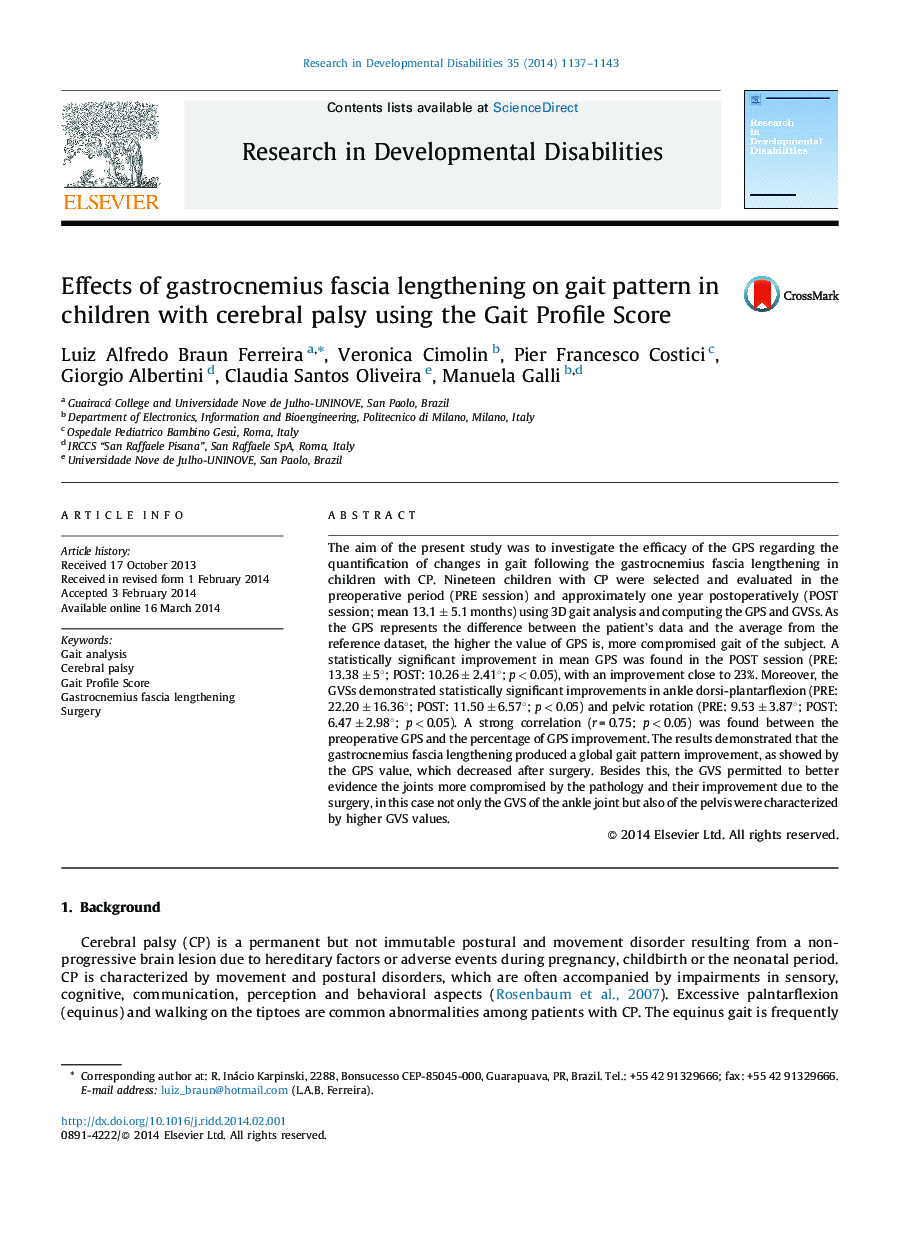| Article ID | Journal | Published Year | Pages | File Type |
|---|---|---|---|---|
| 10317407 | Research in Developmental Disabilities | 2014 | 7 Pages |
Abstract
The aim of the present study was to investigate the efficacy of the GPS regarding the quantification of changes in gait following the gastrocnemius fascia lengthening in children with CP. Nineteen children with CP were selected and evaluated in the preoperative period (PRE session) and approximately one year postoperatively (POST session; mean 13.1 ± 5.1 months) using 3D gait analysis and computing the GPS and GVSs. As the GPS represents the difference between the patient's data and the average from the reference dataset, the higher the value of GPS is, more compromised gait of the subject. A statistically significant improvement in mean GPS was found in the POST session (PRE: 13.38 ± 5°; POST: 10.26 ± 2.41°; p < 0.05), with an improvement close to 23%. Moreover, the GVSs demonstrated statistically significant improvements in ankle dorsi-plantarflexion (PRE: 22.20 ± 16.36°; POST: 11.50 ± 6.57°; p < 0.05) and pelvic rotation (PRE: 9.53 ± 3.87°; POST: 6.47 ± 2.98°; p < 0.05). A strong correlation (r = 0.75; p < 0.05) was found between the preoperative GPS and the percentage of GPS improvement. The results demonstrated that the gastrocnemius fascia lengthening produced a global gait pattern improvement, as showed by the GPS value, which decreased after surgery. Besides this, the GVS permitted to better evidence the joints more compromised by the pathology and their improvement due to the surgery, in this case not only the GVS of the ankle joint but also of the pelvis were characterized by higher GVS values.
Related Topics
Life Sciences
Neuroscience
Behavioral Neuroscience
Authors
Luiz Alfredo Braun Ferreira, Veronica Cimolin, Pier Francesco Costici, Giorgio Albertini, Claudia Santos Oliveira, Manuela Galli,
